How to Overcome Language Barriers With Google Translate
Disclaimer: Some links on this page may be affiliate links. If you purchase anything through them, I will receive a small commission at no extra cost to you! Further details in the Privacy Policy.
An Introduction to Language Barriers Abroad
The further you travel from your homeland, the more you will come into contact with people from different countries who do not speak the same language as you. Learning how to overcome language barriers is vital to ensure this is not an issue.
In some countries, you can often find many other English speakers and get by without too many issues. This is often true of Western European countries and other nations that attract a lot of tourists.
Some countries catch you by surprise. Turkey and South Korea for example caught me off guard, with only a small amount of English speakers in each country, despite being relatively popular countries to visit.
Myanmar on the other hand was a much more rugged adventure in a land of few tourists. In these more offbeat travel locations you expect few people to speak your language.
This guide is designed to help you navigate language barriers on the road. It will focus firstly on why this is necessary, then on useful features of Google Translate.
You do not need to be fluent. But knowing some basics is essential. Skip to section 3 if you just want to read the essential content.

Why is it Important to Overcome Language Barriers Abroad?
There are many reasons why you may need to use Google Translate to translate to English (or of course, your native language if that is not English) on the road. Skip to the following section if you wish to find out how to use key features of Google Translate whilst travelling.
Let’s have a look at a few here:
Navigation
Taxis
Online taxis
Scenario: You land at the airport in a foreign country where no one speaks your language.
You book an Uber (or the country’s local equivalent) to your hotel. The driver sends you messages in his native language and there is no translate option within the app. Therefore you do not know what he is asking.
Solution: You can screenshot the messages and put them into Google Lens (more explanation on that later) to translate and understand what the driver is saying. This can help you find exactly where to go. In some airports in particular, it is not always possible to stop in certain places. Therefore the driver will often offer instructions on where to meet. You may also need to use translate for communication with airport staff. This will help you find the meeting location requested by the driver.
Traditional Taxis
Scenario: You need to get to a certain place and flag down a taxi on the street. He doesn’t speak your language.
Solution: Type into translate “How much will it cost to go to (your destination)?” If you do not understand the driver’s response, open the calculator app on your phone and hold it out allowing the driver to type in a number. Hold it tightly and do not let the driver take your phone from you. Not all drivers can be trusted.
Buses
Scenario: You need to get somewhere only accessible by bus. But you have no idea where the bus is or which bus you need.
Solution: Ask a local and use the conversation feature. Locals can tell you where the bus stop is, the bus number you need, and how to buy a ticket. Some bus tickets can be bought on board. Others require an app or a pre-bought ticket either online or from a station. Google Translate will help you obtain this information.
Directions
Scenario: You’re in a new city with no internet or offline maps and need to find your hotel. You know it’s nearby, but not the exact location.
Solution: You type “where is X hotel?” Into Google Translate. The local understands and is able to point you in the right direction.
Safety
Many of the above scenarios can also be relevant when it comes to keeping you safe on the road. For example, if you arrive in a new country late at night, you will require clear communication with your taxi driver to get to your hotel without issues.
You can use Google Translate to give clear instructions on where the hotel is, and request that he does not drop you off until you have found it for certain. Vital as not all hotels are well-marked and easy to find, and some cities can be unsafe.
If your valuables are stolen on the road, then you should be able to use Google Translate to report the crime and explain what happened. This of course is only possible whilst assuming your phone has not been taken.
Likewise in a medical emergency, you will need to learn how to overcome language barriers to explain the scenario if you do not have a local to help translate.
How to Overcome Language Barriers Using Features of Google Translate
Google Translate offers the ability to translate 133 different languages ranging from the most common ones (English, Spanish, Arabic, French etc.) to far lesser known languages (Quechua, Igbo, Hmong and Guarani for example).
This is what you came here for, so let’s get stuck straight into it. These are the key features that will help you overcome language barriers on the road.
A) Google Translate’s Standard Chat Feature
Open up the application and this is what you will see. There will be two boxes further down the screen. Use the left box to select the language you are trying to translate (or “detect language” if you do not know what it is). Use the right box to select the language you want the text to be translated to.
Then simply type and let the app translate the language for you. It works not just for the Latin alphabet, but for other scriptures including Arabic, Korean, Mandarin and much more.

This is an important feature of Google Translate and one which has proved invaluable for learning how to overcome language barriers in communication abroad.
Clicking on the pen icon at the top of the screen (shown above) will allow you to draw words to translate with your finger (shown below). Clicking on the keyboard icon (on the pen page) will turn it back meaning you enter words with the keyboard again.
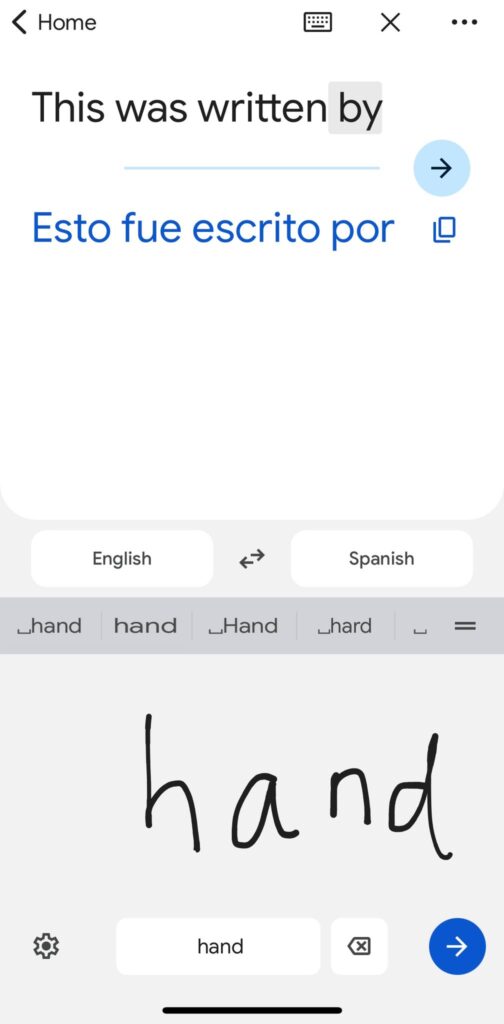
However, it gets better. There are some more advanced features you should be aware of.
B) Using Google Lens to Translate Pictures
Arguably the most useful feature that Google Translate has to offer. In the bottom-right corner of the screen it says “camera”. Click that.
Again it will give you the option of which languages you want to translate from and to.
You have two options at this point.

Taking Pictures of Signs in Other Languages Through Google Translate
The first is to click on the white button at the bottom of the screen to take a picture of anything written in a different language. This will translate whatever you take a picture of and give you a series of options at the bottom of the screen.

These options are as follows:
Send to Translate Home
By using this it will automatically take the text from the photo, and copy it into the main chat translate feature mentioned in section A.
Copy Text
Self-explanatory. It copies the translated text from the picture you just took. You can then paste this wherever you wish.
Listen
This feature plays the translated text in audio form.
Search
This option will allow you to search online for the translated text. It will let you select which browser you wish to search with (Chrome, Safari etc.), whilst also offering the option of the Google application.
Uploading Pictures of Anything in Another Language from the Camera Roll
From Google Lens, click on the bottom-left-hand icon of a picture. This will let you select a photo from your camera roll to translate. It will then automatically translate the text from that image.
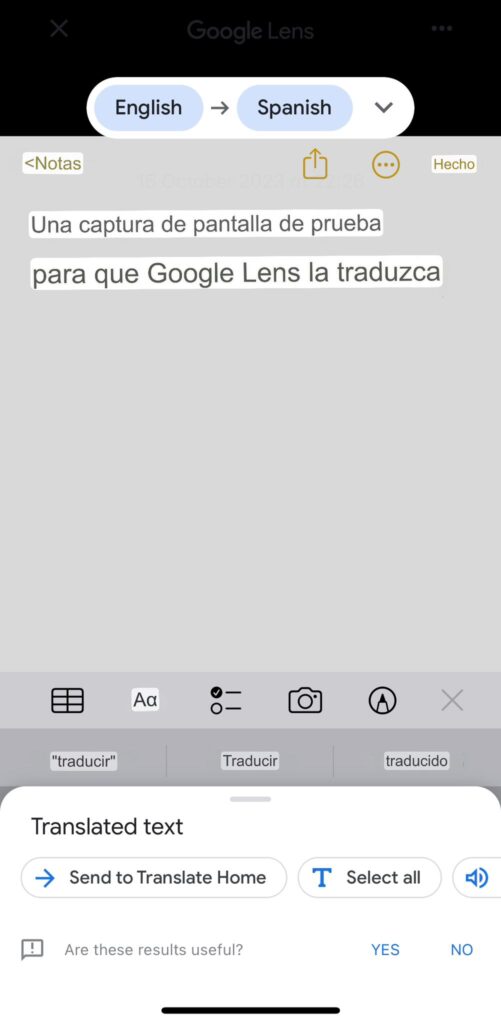
C) Google Translate’s Audio/Conversation Mode
At the bottom of the chat screen are three options. On the right, the camera option (Google Lens) mentioned previously. On the left is conversation and in the middle, a microphone image.
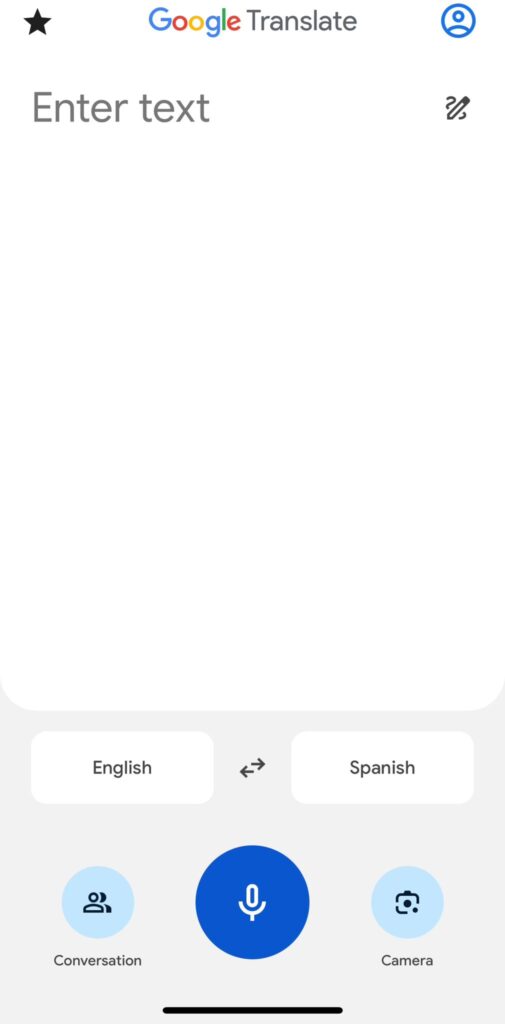
Audio Translation
If you click on the microphone option, simply speak into your phone, and after a few seconds your words will be translated into the target language.
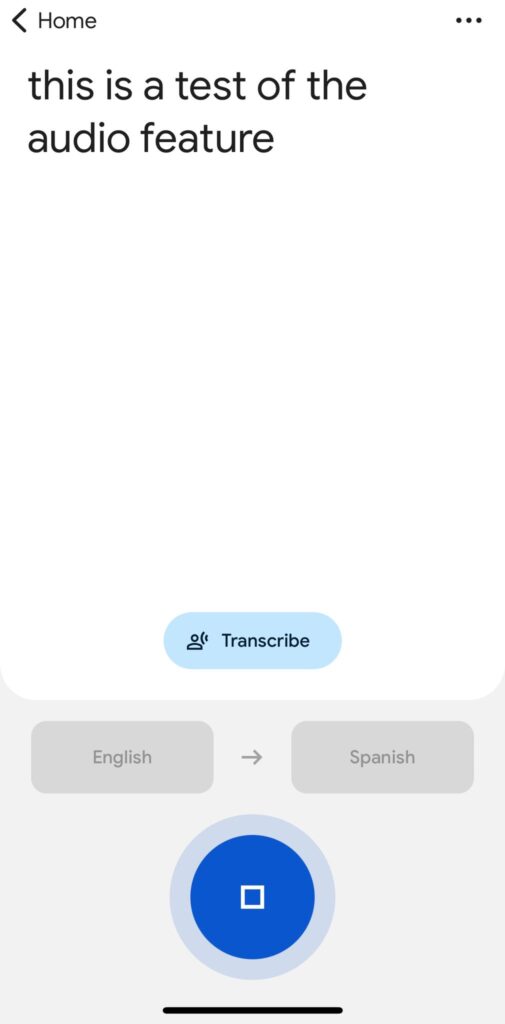
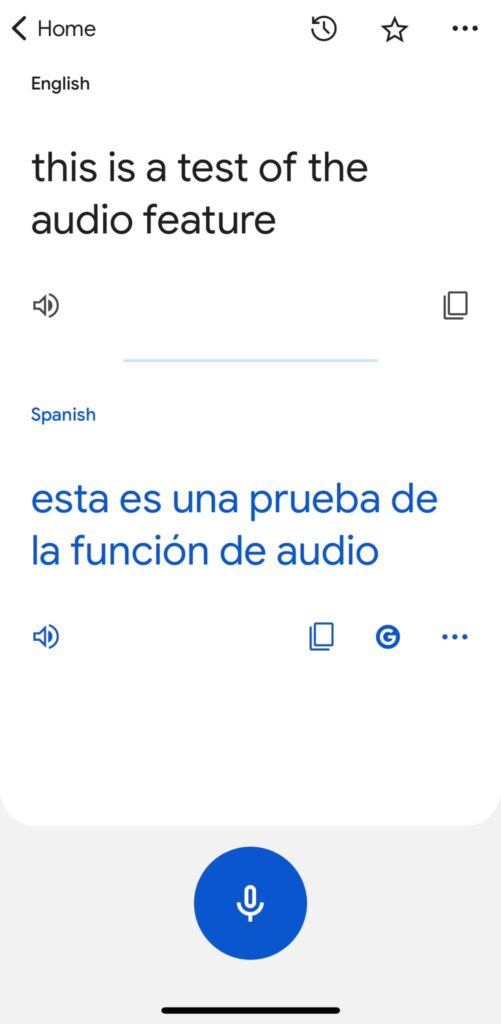
Conversation Mode
Click on conversation mode and there are three options. The left and right options work similarly to the audio function. Speak in one language and it will translate. You will then have to hit the microphone button again before recording the next message.
It is the “both” option in the middle which makes this mode different. Firstly, if you click on the hand waving icon in the top-right corner, it will display a message in both languages instructing the other person on how to use this mode to converse.

Click on the microphone under “both”, speak into it, and you can take it in turns with the other person to speak in your respective languages, with the app displaying messages in both languages. Each message will be deleted as another is recorded. However this option allows continuous conversation with a faster pace than the basic audio translation.
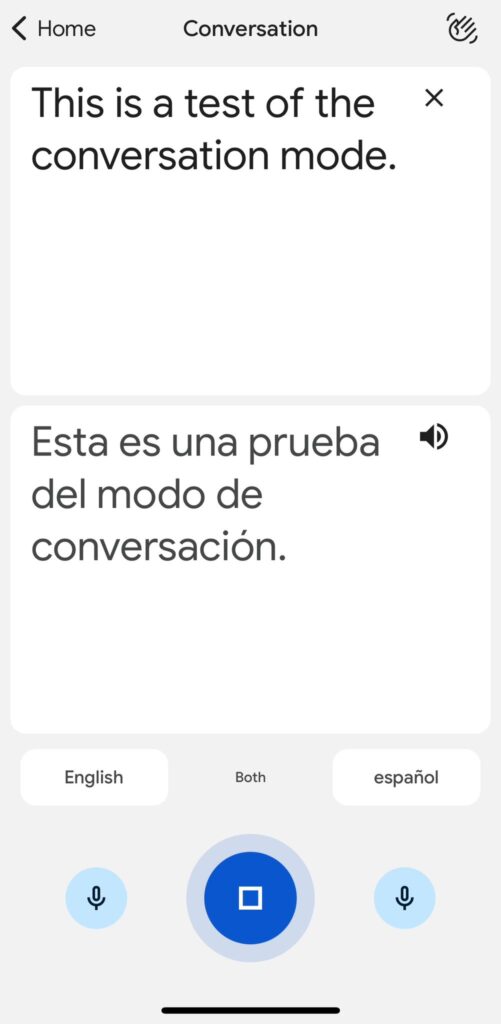
D) How to use Google Translate Offline
Lastly, Google Translate has a vital feature to help you overcome language barriers whilst travelling abroad.
Offline translations.
However, to use this mode, you must download offline capabilities for your target language first. All major languages work offline, yet many minor languages do not. I have bad news for anyone looking to translate Dogri, Guarani or Aymara without internet access…
To download a language for use offline, simply click on the language you wish to translate to, then on the arrow on the right-hand side. Any languages you have already downloaded will be displayed as a tick rather than an arrow.

Drawbacks and Conclusions of Navigating Language Barriers With Google Translate
Whilst Google Translate is an essential tool for any traveller, it is not without drawbacks.
Firstly, some translations are poor. Korean for example comes up with some very obscure translations which either sound very odd in English, or make no sense whatsoever. This seems to be more of an issue for minor languages, and languages written in non-Latin scripts. The likes of Spanish, French and German work well.
Secondly, there is no easy way to translate audio during phone calls. If Google were able to implement a feature that allows this, it would be a massive help. This would be ideal for navigation and emergency situations in particular. For now however, this is one of the few shortfalls of the app.
Nonetheless, this is one of the most important applications to have when you travel abroad.
Thank you for reading if you made it this far.
If you have any suggestions on how this article could be improved, please mention them in the comments box below.
If you wish to check out my other posts, please find them on the destinations page.
